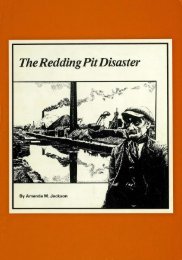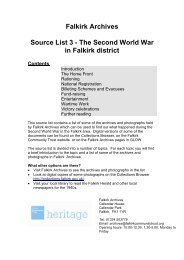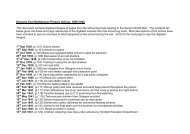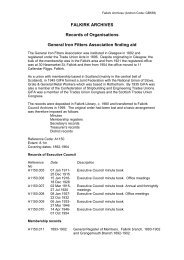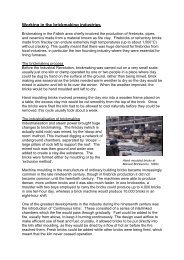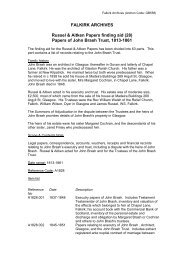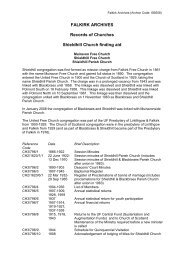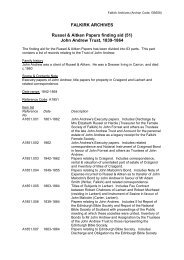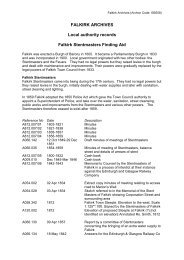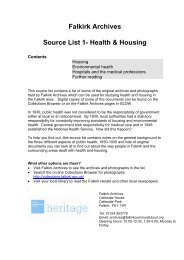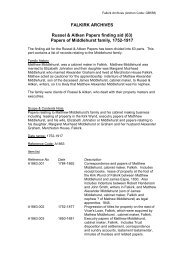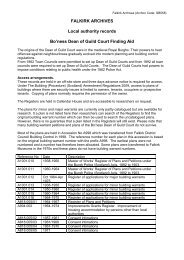Redding Pit Disaster Source List - Falkirk Community Trust
Redding Pit Disaster Source List - Falkirk Community Trust
Redding Pit Disaster Source List - Falkirk Community Trust
You also want an ePaper? Increase the reach of your titles
YUMPU automatically turns print PDFs into web optimized ePapers that Google loves.
<strong>Redding</strong> <strong>Pit</strong> <strong>Disaster</strong><br />
<strong>Pit</strong> 23 of <strong>Redding</strong> Colliery was the site of a flood in September 1923. Sixtysix<br />
men were trapped by the flood, and most of these men died. Some of the<br />
survivors were in the mine for up to nine days before they were rescued and<br />
some of these men never fully recovered from the effects.<br />
The flood itself occurred because a sump had been cut in a dyke to collect<br />
water, but the location of this sump was not properly recorded and coal was<br />
stripped from the area, weakening the sump and so flooding the mine. The<br />
disaster was compounded by poor working practices, which meant that noone<br />
knew exactly how many men were in the mine at the time of the flood.<br />
The rescue effort was hampered by the lack of reliable plans of the mines and<br />
by the difficult access above ground for the ambulances. Gas, rockfalls and<br />
more flooding were hazards throughout the rescue.<br />
In 1923 <strong>Redding</strong> Colliery was owned by James Nimmo & Co. The land was<br />
owned by the Duke of Hamilton who also owned the rights to the minerals in<br />
the whole area.<br />
Following the disaster, a public inquiry was held in Glasgow as well as the<br />
statutory fatal accident inquiry which was held at <strong>Falkirk</strong> Sheriff Court.<br />
The public inquiry recommended that correct records be kept of who was in a<br />
mine at any one time, that better telephone communications should exist<br />
below ground and that new legislation should be put in place regarding mining<br />
in areas approaching water.<br />
The flood was a disaster for the people of <strong>Redding</strong> and the Braes, where<br />
most of the men had come from. Quite apart from the grief of losing<br />
husbands, fathers, brothers and sons, the families affected also lost their<br />
breadwinners. Many of the survivors were never able to work in the mines<br />
again and it was some months before the mine itself re-opened.<br />
The <strong>Redding</strong> <strong>Disaster</strong> Relief Fund was opened by the Provost of <strong>Falkirk</strong> a few<br />
days after the disaster and subscriptions poured in from Scotland and from<br />
other countries, including Australia and the United States. The Fund was<br />
used to give allowances to the widows and children of the men who died and<br />
allowances to the men who survived because most of them were unable to<br />
work again. In the 1920s Britain did not have a national welfare system.<br />
Also, as there was no National Health Service, any medical needs had to be<br />
paid for, and so the Fund provided expenses for the survivors to go to<br />
convalescent homes.




